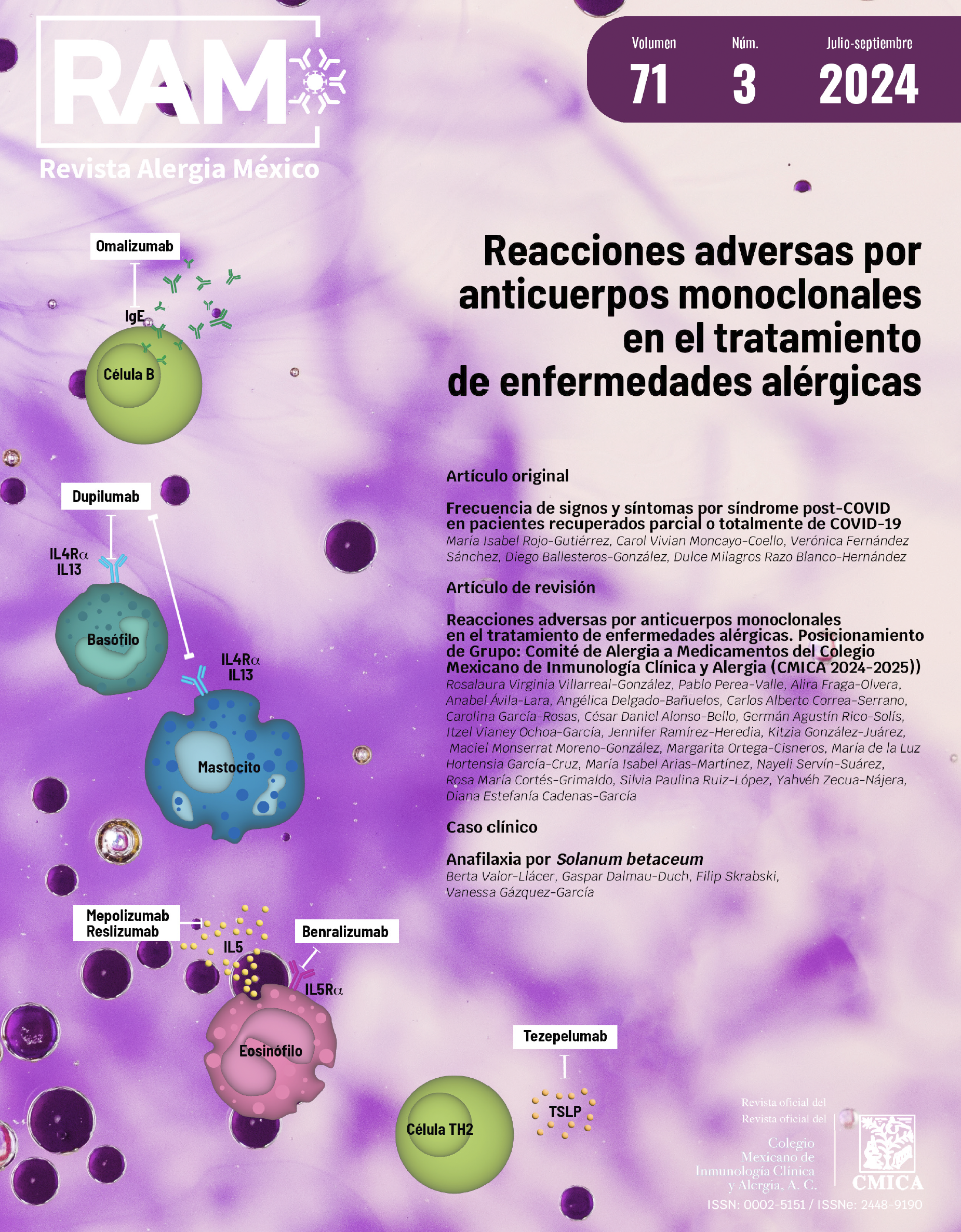Abstract
Backgroung: The main cause of allergy to honey is linked to the head of the bee.
Objective: To confirm the presence of IgE-binding proteins in honey and banana yogurt.
Case report: A 44-year-old man with no relevant history presented with pharyngeal, palmo-plantar and axillary itching, dysphagia, dizzinessa nd sweating after ingesting honey. Addiotionally, when he drinks banana yogurt and cow’s milk smoothie he notices slight pharyngeal itching. Normal basal tryptase (5.03 ug/L), total IgE 212.2 kU/L, IgEs: honey 37.3 and Apis 0.69 kU/L. SDS-PAGE and immunoblot of honey and banana yogurt extracts with the presence of bands between 12 to 70 kDa (honey); 12 to 35 kDa (banana yogurt) and SDSPAGE and immunoblot of bee venom extract with the presence of bands from 10 to 50 kDa and the patient’s serum recognized two proteins: one compatible with the major allergen Api m 1 at 16 kDa and another compatible with Api m 11 at 50 kDa.
Conclusion: The patient is sensitized to several honey proteins (2 between 50-75 kDa and 1 between 20-25 kDa). He doesn’t recognize any protein in the banana yogurt. Additionally, the patient recognizes a bee venom protein of about 50 kDa (compatible with Api m 11), and this may be the primary sensitization pathway.
Keywords: Allergy; Honey; Bee; IgE; Itching pharyngeal; Dysphagia; Triptase.
References
1. Ulloa AJ, Mondragón-Cortez PM, Rodríguez-Rodríguez R, et al. La miel de abeja y su importancia. Revista Fuente 2010; 2 (4): 11-18. http://fuente.uan.edu.mx/publicaciones/01-04/2.pdf
2. Bauer L, Kohlich A, Hirschwehr R, Siemann U, Ebner H, et al. Food allergy to honey: Pollen or bee products? J Allergy Clin Immunol 1996; 97 (1): 65-73. https://doi.org/10.1016/s0091-6749(96)70284-1.
3. Jhawar N, Gonzalez-Estrada A. Honey-induced anaphylaxis in an adult. QJM 2022; 115 (5): 325-326. doi: 10.1093/qjmed/hcac028.
4. Erban T, Shcherbachenko E, Talacko P, Harant K. The Unique Protein Composition of Honey Revealed by Comprehensive Proteomic Analysis: Allergens, Venom-like Proteins, Antibacterial Properties, Royal Jelly Proteins, Serine Proteases, and Their Inhibitors. J Nat Prod 2019; 82: 1217-26.
5. Rodríguez-Pérez R, Carretero P, Brigido C, Nin-Valencia A. The new Api m 11.0301 Isoallergen From Apis mellifera Is a Food Allergen From Honey. J Investig Allergol Clin Immunol 2022; 32 (6): 492-493.
6. Carpio-Hernández D, Tomás M, Quirce S, Caballero ML. The new Api m 11.0301 Isoallergen From Apis mellifera Is a Food Allergen From Honey. J Investig Allergol Clin Immunol 2022; 32 (6): 492-493. doi: 10.18176/jiaci.0799
7. Anwar S, Kausar MA, Abdalaziz HSM, Elagib HM, et al. Potential honey bee (Apis mellifera) allergens associated with IgE-mediated allergy- An In-silico study. Cell Mol Biol (Noisy-le-grand) 2023; 69 (13): 83-88. doi: 10.14715/cmb/2023.69.13.13.

This work is licensed under a Creative Commons Attribution-NonCommercial 4.0 International License.
Copyright (c) 2025 Revista Alergia México

